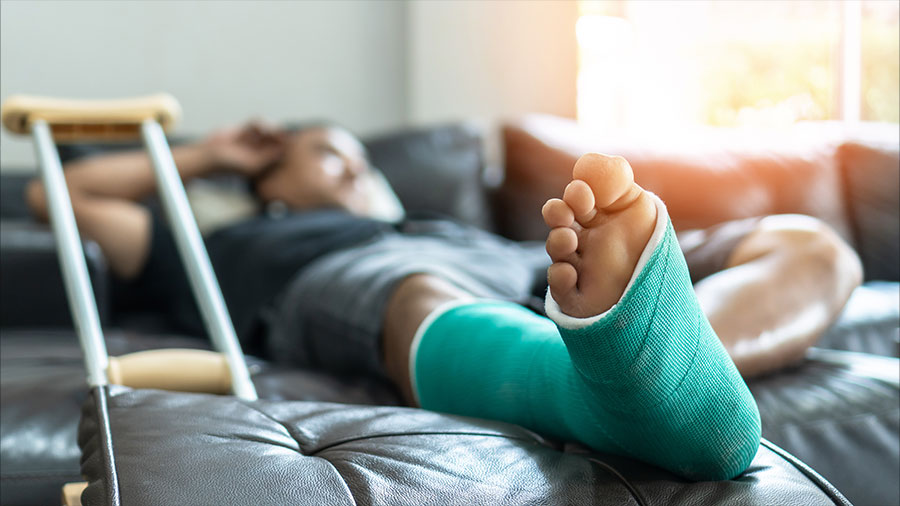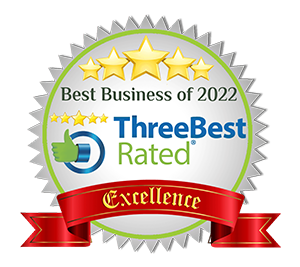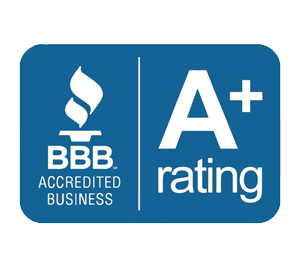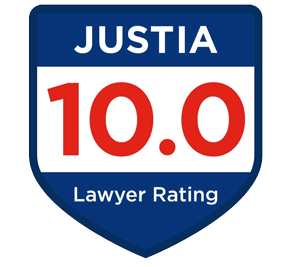
A personal injury demand is the formal request to the insurance company for damages. There are many important factors that go into writing a personal injury demand. As a personal injury attorney, I have written thousands of similar demands.
In this article, I am going to outline several of the key points that the insurance company is looking for. If you follow these suggestions, I guarantee it will help you receive the best possible outcome for the claim.
Spoon Feed the Information
Please keep in mind when you are writing the personal injury demand, you want to make it as easy as possible for the insurance adjuster (person evaluating the claim). You want to write simply and clearly. You don’t want the adjuster to have to dig for information.
Insurance adjusters have hundreds of cases to evaluate and if you don’t spoon feed the information, they will not look for it. That means that your claim will be undervalued and perhaps, denied.
Obtaining the Accurate Coverage Information
It is extremely important that you read the insurance policies and declaration pages before beginning your personal injury demand. You must investigate all potential layers of available coverage and submit your demand accordingly.
For example, if there is $50,000.00 available, you don’t want to submit a demand for $300,000.00 and vice versa. Understanding the exposure of the insurance company, and knowing how to demand accordingly, is the first hurdle.
Details of the Personal Injury Accident
When writing a personal injury demand, you need to help the insurance adjuster understand what happened in the accident. This section is also called, “the facts of loss.”
For an auto accident, many of the items you’ll need to write “the facts of loss” section of your demand can be found in the long form accident report completed by the reporting officer after your accident.
“The facts of loss” should list the day the accident happened, the make/models of the vehicles involved, the weather conditions, an explanation as to where they were traveling to (or from) when the accident occured, what streets they were on, a detailed explanation of the crash details, if any citations were issued, etc.
If the personal injury claim did not involve a motor vehicle crash, then adjust the section accordingly.
Liability, or who was at fault, must be clearly established because this can make or break your case. You will need to explain to the adjuster why someone or something was negligent. You then will need to show how that negligence caused the accident.
Depending on the complexity of the accident, we sometimes recommend taking pictures of the area where your accident happened. We also regularly use Google earth to describe locations more clearly.
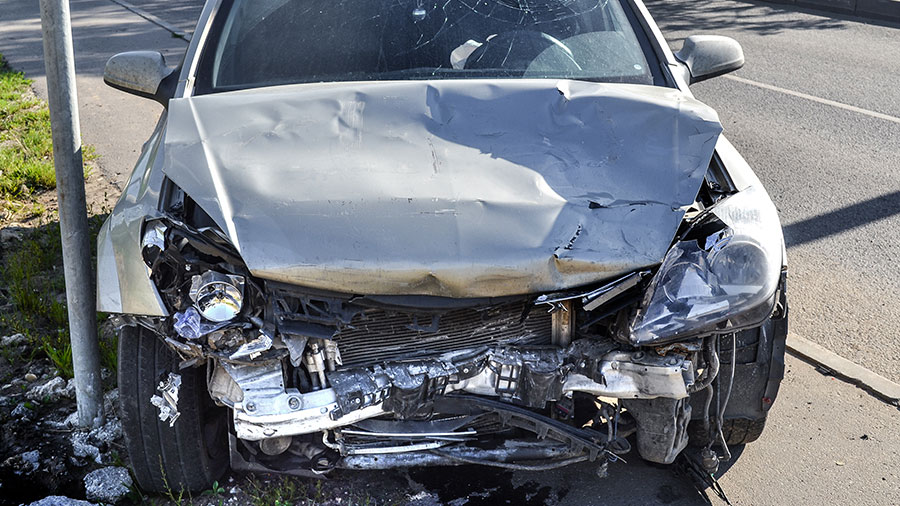
Property Damage (If Applicable)
The damage the vehicle (and the at fault vehicle) sustained in the accident is a big factor that needs to be taken into consideration when writing the personal injury demand.
The majority of vehicles are made to withstand a certain amount of force and substantial damage may not always be visible to the untrained eye. Thus, having a property damage estimate included in your demand is extremely important.
We also recommend taking pictures of any and all damage the vehicle sustained to include in your demand package.
PIP Log/Medpay/Health Liens
When preparing the personal injury demand, you must include both a “PIP” log and a “Medpay” log, if applicable. The insurance company will want to know exactly how much the medical providers billed the insurance company, how much was paid out to them, and what their outstanding balances are.
In the state of Florida, it is a requirement that all drivers carry what is called Personal Injury Protection coverage (“PIP”) for themselves. If they receive what is called an emergency medical condition rating by an MD or a DO within the first 14 days of the automobile accident, “PIP” coverage will pay for 80% of the medical expenses up to $10,000.00 (or potentially more depending on the specific policy).
There may also be a layer of insurance called Medical Payments coverage (“Medpay”). In an automobile accident, “Medpay” will pay for any medical expenses incurred in excess of the $10,000.00 personal injury protection limit.
If the demand is for a slip & fall accident, the property where the incident occurred may also have “Medpay” coverage.
If there is health insurance, it may cover outstanding medical expenses (as long as the medical provider accepted health insurance). The health insurance will hire a subrogation company to handle these payments and any potential due recovery.
You will need to speak to the health insurance, obtain the subrogation department, and request an itemized lien from them to include any and all payments made. These figures will be important to include in your demand package.
Include Photographs in Your Personal Injury Demand
Photographs of the injuries and how they healed, are also important items to include in your personal injury demand. If there is anything visible, take as many pictures of them as you can.
I would suggest taking pictures of minor bumps and bruises but also any scrapes, cuts, stitches.
If the person was placed in a cast/sling, get photos as well as any visible marks from the seatbelt, etc. Continue to take pictures of any injuries throughout the treatment process.
For example, maybe a window broke and there was a cut by a glass shard. Thus, including pictures of the initial scrape and pictures of any scarring shows the insurance company that there is a permanent impairment to the body.
Medical Treatment/Future Impairment
The longest and most detailed section of your personal injury demand should always be the medical treatment section.
I like to include a full medical chronology into all of our demand packages, although that is not always necessary.
It is important to clearly outline all of the medical treatment that was performed.
Any positive diagnostic findings need to be highlighted so the adjuster can understand the severity of the injuries.
For example, it makes a big difference in the value of the case if the MRI shows disc bulges (considered soft tissue injuries) or disc herniations impinging on nerves (could require surgery).
If there are “good injuries,” make sure that the adjuster does not miss them.
If there was any invasive treatment or even a recommendation for future invasive treatment, include it. Having a cost estimate for recommended future treatment helps show the long term cost of the medical care.
The absolute most important thing to show in your personal injury demand is that they sustained a permanent injury. The permanency of the injury is the entire basis of your claim.
It is Florida law that the victim must have sustained a permanent injury. You want to make sure that a final exam from the treating medical providers is conducted. In this final exam, it is imperative that the doctor provides a permanent impairment rating. This rating is typically a percentage used to describe the amount of damage that was incurred as a whole from the injury.
In this final exam, the doctor may also provide an estimated dollar figure for future medical care. I would suggest adding together the amount of the total medical bills, the total amount of any recommended invasive treatment, the total amount of the property damage, and the estimated future medical care costs, for a combined figure of total loss. This large number will help show the adjuster the true monetary value of the loss.
Medical Bills
When putting together the personal injury demand package, include any and all medical bills incurred. These bills should include an itemized ledger showing the cost of every medical appointment from every medical provider.
When obtaining the medical bills, be aware of all the different facilities. Just because you treated with Dr. Smith doesn’t mean the bill will say Dr. Smith. The bill may be listed under Dr. Smith’s medical billing facility called ABC Spinal or maybe they received a prescription under his pain management company.
Another example is hospital bills. When someone goes to the hospital they will receive a total of 3 bills for that visit. There will be a bill from the ER, the treating physician, and the radiology department. Make sure that you look for all three and don’t miss anything.
Loss of Enjoyment of Life/Pain & Suffering
This section of the personal injury demand describes in detail how one’s day to day life has been affected as a result of the accident.
- Start off by describing what the person’s life was like before.
- Were they in good physical health?
- Did they frequent the gym?
- Did they have any hobbies like jogging, swimming, gardening?
- Then begin to describe what their life is like now.
- Have they gained weight because of an inability to exercise?
- Have they become depressed/anxious?
Some things to ask the victim before writing-
- Can they tie their shoes?
- Wash their hair?
- How long can they stand or sit before they are in pain?
- How has their employment been affected?
- Do they have any lost wages?
This section is also a good place to list any vacations they may have been unable to attend.
- Did they have concert tickets that were canceled?
- What was the total cost of the trip and did they lose any money?
Some other good questions are-
- How has their family been affected?
- Did they miss any birthday parties?
- Does it hurt to pick up and hold small children?
- Has their marriage been affected by a lack of intimacy due to pain?
Conclusion and Demand for Payment
In conclusion, you want to put a monetary value on your case in its entirety. I suggest demanding 2-3 times higher than the actual value of the claim to allow for room to negotiate.
In the final paragraph, include how you want the check made payable and the timeline for the response. In most circumstances, give the insurance company 30 days. The reason why 30 days is standard is because it is accepted as a reasonable time frame. You do not want to rush the insurance company and give them an excuse to delay or ask for more time.
Keep in mind that the insurance company has an obligation to try and resolve the claim in good faith, so don’t hand them an excuse on a silver platter.
Secrets When Writing a Personal Injury Demand:
Here are a few tricks and tips to keep in mind when writing the personal injury demand.
Don’t Be Shy
While you never want to mislead or exaggerate the situation, you also can’t be timid. Make an effective and convincing pitch in the demand. My best advice is to lay it on thick. The more risk that the adjuster feels, the more that the claim will be worth.
Use Whatever Dirt You Have On the Other Person
I call this technique sliming the other party. The worse that you can make the at-fault party look, the more likely the insurance company will pay to make the situation go away.
For example, if you find that the other driver didn’t have a driver’s license, or has a long criminal history, hammer it.
If the other driver was charged with a crime or a ticket, go on the clerk’s site, print it out and attach it.
If a business was in the news for some type of prior complaint, use it. This technique can be very effective to scare the insurance company into paying the claim.
Use the Most Graphic Photos You Can Find
As I’ve said in the above, you want to convince the insurance adjuster that the personal injury claim is worth a lot of money.
If you have a lot of photos of injuries, only send the worst ones. Likewise, if you have photos of a car accident, use the ones that show the most damage.
Remember, the adjuster is viewing the claim through the eyes of what a jury might do and pictures can be extremely powerful.
Personalize the Personal Injury Demand
Always try to make the injured person seem like a real person, not a number. This can be hard to do because the demand can be very factual/medical.
Don’t be a robot when you write the demand. If you can personalize the person and make them seem sympathetic, then highlight it.
For example, if they have a great family, had a successful school career, had personal accomplishments, have a good job, or are involved in extracurricular events, mention them.
Keep in mind how many other accident demands that the adjuster will see. Make your demand stand out with personal and intimate details. You want the adjuster to like your client and feel sorry for what they’ve been through.
Always Ask For More Than What You Think Your Case is Worth
There is a fine line between being greedy and aggressive when you are asking for money. You need to use common sense when deciding how much the case is worth. My experience is that you should always ask for more than what your claim is worth. The worst that the insurance company can say is no. But, if you ask for an amount that is outrageous, then you risk turning off the adjuster and actually hurting yourself. If your demand is unreasonable, then the adjuster can retaliate with a really low offer. A demand that is too high can be counter productive and force a case into a lawsuit.
Double Check Your Work
This may seem like common sense, but you would be surprised at how many easy mistakes can be fixed by simply double checking your work. Pay attention to the little things. You do not want your demand to come across as sloppy or rushed. When an adjuster reads the demand, you cannot have typos. Even if your substance is great, little mistakes make a reader question your competence.
If they have questions about how you write, they will have questions about whether to believe what you are saying in the demand.
For example, make sure the page headers and page numbers are correct. Make sure that if you give 30 days to respond, you accurately calculate the due date. And, always make sure that you spell the adjuster’s name correctly!
Can You File a Personal Injury Demand Without a Lawyer?
Yes, of course. There is no requirement that a personal injury demand be written by a lawyer. But, In my entire career, I have never seen a person without a lawyer write a demand as well as I can.
I have taken over countless cases from people who have tried to handle their claims on their own. In every single case in my entire career, after I have taken over the case, my client has been paid more and put more money in their pocket than before me.
That’s just the reality of a trained eye versus someone doing the best that they can.
Contact a Personal Injury Attorney to Handle Your Personal Injury Demand
If you have been injured in a personal injury accident, I highly advise you to seek legal help as soon as possible. You might not think that your case is worth enough to hire a lawyer, but you would be surprised.
With the right advice and handling, personal injury claims can be very valuable. Since a lawyer charges a percentage of the recovery, there is no risk if you don’t win. But, if you would like to handle the matter on your own, I hope that the above advice assists you along the way.
If you have any questions or concerns, please do not hesitate to contact us today.
Best of luck!

